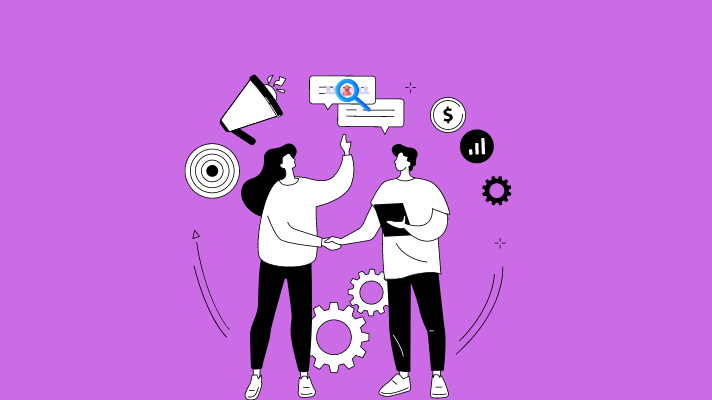Have you ever felt like a website just gets you?
That’s personalisation at work, and it’s revolutionising how businesses optimise their online presence. Personalization in Conversion Rate Optimisation (CRO) is the secret sauce that transforms casual browsers into loyal customers. In this article, we’ll dive deep into the psychology of user experience and uncover how personalisation can skyrocket your conversion rates.
The Power of Tailored Experiences
Personalisation in CRO isn’t just a fancy buzzword—it’s a game-changer. By customising the user experience based on individual preferences, behaviours, and demographics, businesses can create a magnetic pull that keeps visitors coming back for more.
Understanding User Psychology
At its core, personalisation taps into fundamental human desires:
- Recognition: We all want to feel seen and understood.
- Relevance: Information that speaks directly to our needs is more valuable.
- Efficiency: A tailored experience saves time and reduces frustration.
By addressing these psychological needs, personalisation creates a seamless and enjoyable user journey that naturally leads to higher conversion rates.
The Data-Driven Approach
Effective personalisation relies on robust data collection and analysis. Here’s how it works:
- Behavioural Data: Tracking user actions, such as clicks, searches, and time spent on pages.
- Contextual Data: Considering factors like location, device type, and time of day.
- Historical Data: Analysing past purchases and interactions to predict future preferences.
By leveraging this data, businesses can create dynamic experiences that evolve with each user interaction.
Implementing Personalisation Strategies
Now that we understand the ‘why’, let’s explore the ‘how’ of personalisation in CRO.
1. Dynamic Content Delivery
Imagine walking into a shop where the shelves rearrange themselves to showcase items you’re most likely to buy. That’s what dynamic content does for your website.
- Product Recommendations: Suggest items based on browsing history and purchase patterns.
- Personalised Landing Pages: Tailor hero images and copy to reflect user interests.
- Smart CTAs: Adjust call-to-action buttons based on the user’s stage in the customer journey.
2. Behavioural Targeting
By analysing user behaviour, you can anticipate needs and provide solutions before they’re even requested.
- Exit-Intent Popups: Offer targeted discounts or information when a user is about to leave.
- Abandoned Cart Reminders: Send personalised emails to recover potential lost sales.
- Browsing History Retargeting: Display ads for products users have shown interest in across other platforms.
3. Segmentation and Persona-Based Marketing
Not all users are created equal. Segmentation allows you to categorise your audience and tailor your approach accordingly.
- Demographic Segmentation: Adjust messaging based on age, gender, or location.
- Psychographic Segmentation: Consider lifestyle, values, and interests.
- Behavioural Segmentation: Group users based on their interactions with your site.
The Impact of Personalisation on Conversion Rates
The proof is in the pudding—or in this case, the data. Let’s look at some compelling statistics that showcase the power of personalisation:
- Personalised email campaigns have an average ROI of 122% (Instapage, 2021).
- 80% of consumers are more likely to make a purchase when brands offer personalised experiences (Epsilon, 2018).
- Personalised home page promotions influenced 85% of consumers to buy (Accenture, 2020).
These numbers aren’t just impressive; they’re a call to action for any business serious about improving their conversion rates.
Tools of the Trade
To implement effective personalisation strategies, you’ll need the right tools in your arsenal. Here are some top picks:
- Google Analytics: The gold standard for understanding user behaviour and demographics.
- Optimizely: A comprehensive platform for A/B testing and personalisation.
- Dynamic Yield: Offers advanced machine learning algorithms for real-time personalisation.
Remember, the key is not just having the tools, but using them strategically to create meaningful experiences for your users.
Overcoming Personalisation Challenges
While the benefits of personalisation are clear, it’s not without its hurdles. Here are some common challenges and how to address them:
Privacy Concerns
With great data comes great responsibility. Users are increasingly wary of how their information is collected and used.
Solution: Be transparent about your data practices and offer clear opt-out options. Implement robust data security measures and comply with regulations like GDPR.
Data Quality and Integration
Personalisation is only as good as the data it’s based on.
Solution: Regularly audit and clean your data. Invest in integrating data sources to create a unified customer profile.
Scalability
As your user base grows, so does the complexity of personalisation.
Solution: Utilise AI and machine learning algorithms to automate and scale your personalisation efforts.
The Future of Personalisation in CRO
As technology evolves, so too will the possibilities for personalisation. Here’s what to watch for:
- AI-Driven Insights: Advanced algorithms will provide even deeper understanding of user intent.
- Voice and Visual Search Personalisation: As these technologies grow, expect personalised experiences tailored to how users speak and see.
- Cross-Device Personalisation: Seamless experiences across all devices will become the norm.
Wrapping Up: The Personal Touch That Converts
Personalisation in CRO is more than a trend—it’s a fundamental shift in how we approach digital marketing. By understanding and catering to individual user needs, businesses can create experiences that not only convert but delight.
Ready to take your conversion rates to the next level? Start small, test often, and always keep the user at the heart of your strategy. Remember, in the world of CRO, getting personal isn’t just polite—it’s profitable.

Leave a Reply